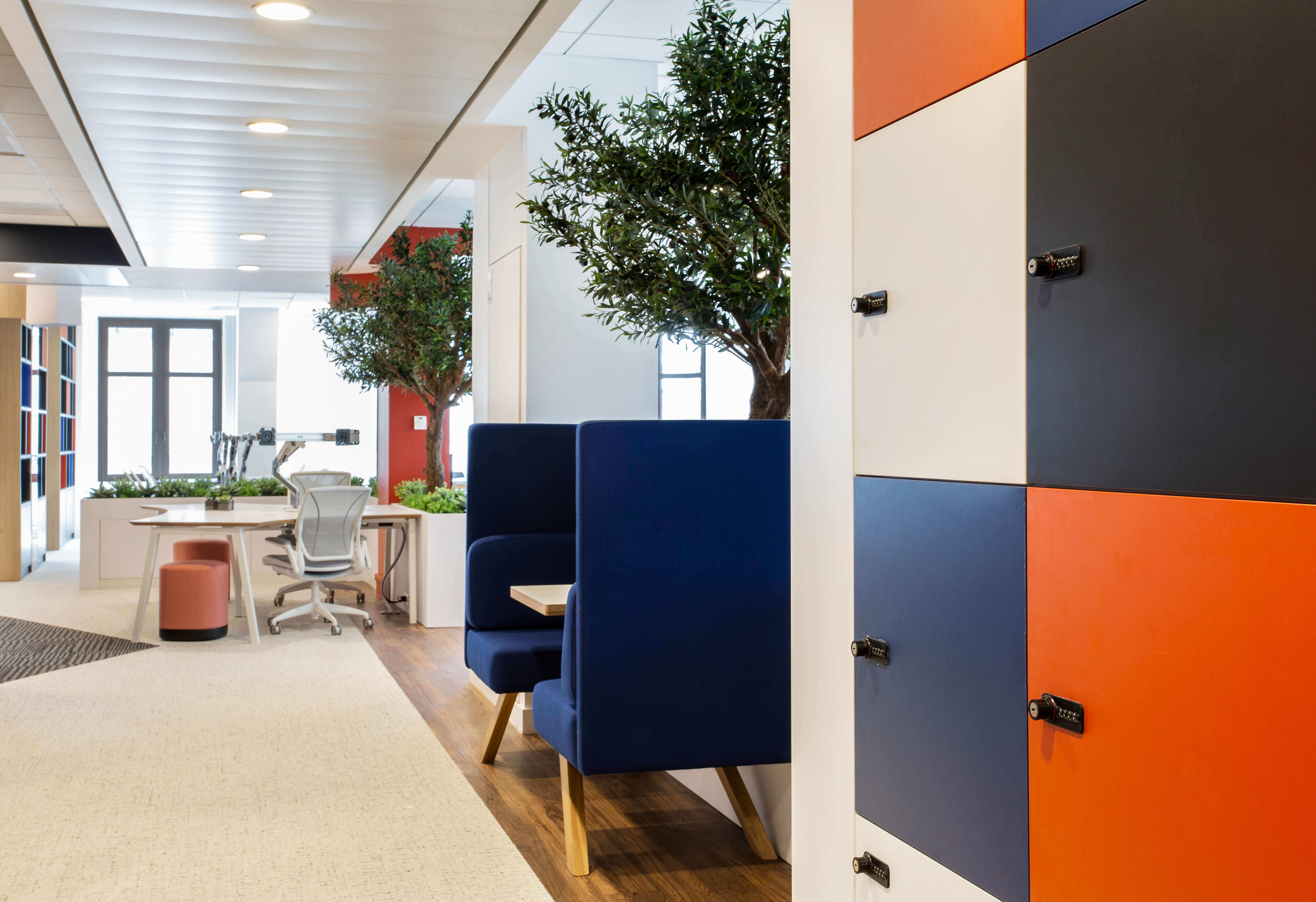Organisations have come to accept that colour affects productivity and mood at the workplace. Picture this; you are back to work from a long Easter weekend; you’ve got loads of meetings, your workload seems to be piling up, and timelines for the new week are tight and fixed. You’re holed up in your tiny grey office and eager to grab a cup of coffee and catch up with your colleagues. You head over to the bright and colourful coffee lounge where the furniture has shades of lush tropical green and rich sunset yellow. Can you imagine how that might impact your mood?
Colour has a profound effect on our mood, energy, and feelings, which is why we can strategically use colour to influence how others feel in the office. The emotive aspect of colour has been studied for centuries with people seeking to understand the relationship between colour, attitude and productivity, especially within the modern workplace. Organisations and individuals are interested in understanding how to incorporate colour to achieve the desired ambience in their surroundings. Even without hiring a professional interior designer, with some basic knowledge of colour psychology, you can use colour to set the desired tone within a workspace.

Tactical Use of Colour at the Workplace
Colours are divided into primary, secondary and tertiary colours. The primary colours are red, yellow and blue. Secondary colours are green, orange and purple; all of which are a mix of the primary colours. Tertiary colours are achieved by mixing primary and secondary colours. For any interior design enthusiastic, it is important to have the colour wheel which can guide you in choosing the right colours for your office.
Warm Versus Cool Colours
Have you ever overheard people discussing how warm or cool a place is? What comes to mind when you think of blue or red colour, for example? Some colours create a welcoming and warm environment, whereas others feel cold and clinical. Again, this is linked to colour psychology. Green, purple and blue are known as the cool colours since they have a calming effect on the environment. Red orange and yellow are regarded as warm colours as they tend to brighten up a place, reminding us of fire or sunsets.
Cool Colours
Green
Green is known as a relaxing and rejuvenating colour as it can create tranquility and peace in an environment. If an organisation thinks there might be tension in the office, it’s a good idea to incorporate different shades of green in the office. An interior designer should carefully balance the colours on the walls, worktops and seats to achieve a balanced look, mixing green with an accent colour like dark brown to create a natural, earthy space. Adding green flowers to an office not only adds fresh air but it further calms the mind and has been proven to enhance productivity.
Blue
Blue is the perfect colour for the modern workplace. Studies show that the colour stimulates intellectual thinking, can encourage creativity, and enhance productivity. One idea is to paint conference rooms blue to inspire new ideas whilst also reducing tension among people, especially when there is a likelihood of long meetings. Blue can also be great for spaces that have repetitive work, like accounting or in manufacturing industries, as it can help employees remain productive and focused. Companies can use blue spaces to evoke stability, trust and loyalty among the employees.
Warm Colours
Red
Colour red evokes passion and desire in people. As a warm colour, red is known to foster creativity, boost energy and create urgency. Organisations that are time bound may creatively use red to ensure that work is done on time and remind people to stay active throughout the day. It’s important to use the colour red in moderation though, because it can be overwhelming in a small space. Red should be sparingly used so consider it as an accent colour instead. In fact, having a single armchair in the office is sufficient to brighten up a room, keep people motivated and stimulate creativity.
Yellow
Yellow is associated with warmth and sunshine. The yellow colour radiates happiness, energy, positivity and hope. Yellow should also be used sparingly as an accent colour within an office because too much of it could be overwhelming or induce anxiety. Like other warm colours, yellow is ideal for waiting areas, lounges or hallways. Customers are more likely to find a company’s representatives friendly and trustworthy in a yellow waiting area.
The 60:30:10 Rule
Companies can never run out of options when it comes to mixing colours when designing a modern workplace. Before choosing the main colour within an office, it’s worth considering the mood, atmosphere and level of productivity that you seek to have. For any colour combination, it’s important to consider the 60:30:10 rule of colour. 60% of the room should be the main neutral colour, 30% a secondary bold colour that supports the dominant colour and 10% should be the boldest colour in a room - ideal for an accent colour. Caution should always be applied with the texture and the reflection of the colour as that can ultimately affect the mood of the staff at work.
Conclusion
The impact of colour on productivity and mood at the workplace can never be overlooked. It’s important to carefully consider the type of atmosphere you want in the workplace. Decide if you want a combination of the warm and cool colour scheme, complementary scheme, intentionally colourful, neutral, or a simple monochromatic scheme. Once you have made up your mind on your preferred colour scheme, grab a colour wheel and work with a professional interior designer to create the space that you want.

